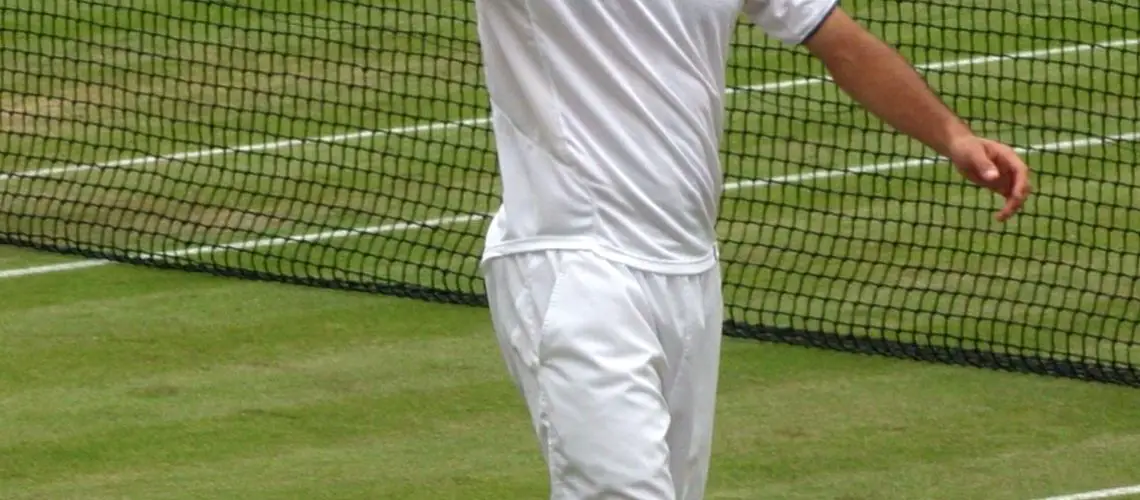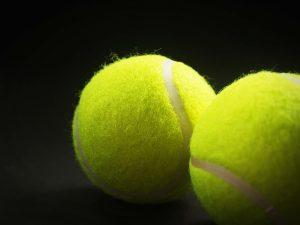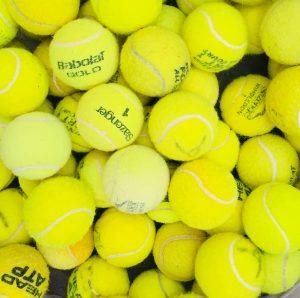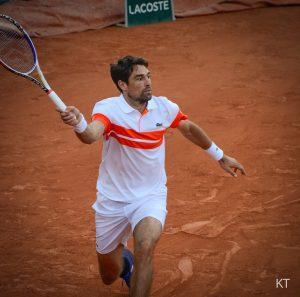We may earn money or products from the companies mentioned in this post.
Introduction to Volleying in Tennis

Tennis is a game of skill, strategy, and finesse While powerful groundstrokes and accurate serves often steal the spotlight, volleying is a crucial aspect of the game that should not be overlooked Mastering this technique can greatly enhance a player’s overall performance on the court, both in singles and doubles matches
Importance of volleying in tennis
1 Role in doubles matches:
In doubles matches, volleying plays a pivotal role in dictating the flow of the game A well-executed volley can put pressure on opponents by keeping them constantly on their toes It allows players to take control of the net, cutting off angles and intercepting shots with precision This aggressive approach not only intimidates opponents but also creates opportunities for winners or forcing errors
2 Benefits for singles players:
Even for singles players who may not venture to the net as frequently as their doubles counterparts, mastering volleys can still provide significant advantages The ability to transition seamlessly from baseline rallies into net play adds an element of surprise to their game It allows them to finish points more efficiently by capitalizing on short balls or vulnerable positions their opponents may find themselves in during rallies
Types of volleys
1 Forehand volley:
The forehand volley is executed when a player receives an incoming shot on their forehand side while positioned at or near the net By maintaining proper footwork and positioning, players can use this stroke to redirect shots with precision and pace back towards their opponents’ side of the court
2 Backhand volley:
The backhand volley is similar to its forehand counterpart but performed with a player’s non-dominant hand It requires excellent hand-eye coordination and a solid understanding of timing and technique With practice, players can develop a reliable backhand volley that allows them to react quickly at the net and maintain control over the direction and pace of the ball
Mastering the art of volleying in tennis requires patience, practice, and perseverance By incorporating this essential skill into their game, players can elevate their performance to new heights Whether it’s dominating at the net in doubles matches or adding versatility to their singles play, volleys are an integral part of a well-rounded tennis player’s repertoire
Techniques for Effective Volleying

In order to excel in the game of tennis, mastering the art of volleying is crucial The first step towards becoming an effective volleyer is understanding the importance of a proper grip and stance
Proper Grip and Stance
-
Continental grip:
The continental grip, also known as the “chopper” or “hammer” grip, offers several advantages when it comes to volleys It allows for easy maneuverability and provides a solid foundation for control and accuracy To hold the continental grip correctly, imagine holding a hammer with your racket hand Place your index knuckle on bevel number two (the side bevel closest to you) while keeping your other fingers relaxed around the handle -
Stance:
A proper stance sets the foundation for successful volleys The ready position involves being on the balls of your feet with knees slightly bent, allowing for quick movements in any direction The split-step technique involves hopping into the air just before your opponent makes contact with the ball, enabling you to react swiftly Additionally, mastering footwork techniques such as shuffling and sidestepping will enhance your ability to reach challenging shots
Execution of the Forehand Volley
The forehand volley is an essential shot in tennis that requires precision and timing To execute it effectively:
-
Preparing for the shot:
Anticipation and positioning are key factors in successfully executing a forehand volley By reading your opponent’s body language and racket position, you can anticipate where they will hit their shot and adjust your positioning accordingly -
The swing:
When it comes to the forehand volley, a compact swing is essential Focus on keeping your swing short and controlled, with the contact point being in front of your body Depending on the situation, you can choose between a punch technique (using minimal backswing) or a swing technique (utilizing a small backswing) to execute the shot effectively -
Follow-through:
Once you make contact with the ball, it is crucial to maintain balance and recover quickly A smooth follow-through motion will help ensure that you remain stable after executing the forehand volley
Execution of the Backhand Volley
The backhand volley requires similar techniques as the forehand volley but with adjustments specific to its nature:
-
Preparing for the shot:
As with any shot in tennis, anticipation and positioning are vital in executing a successful backhand volley By positioning yourself correctly and reading your opponent’s shots, you can be ready to make an effective play -
The swing:
When it comes to the backhand volley, focus on maintaining a compact swing just like with the forehand volley Keep your eye on the ball and adjust your body position accordingly to execute clean contact Similar to the forehand volley, you can choose between a punch technique or a swing technique based on your comfort and situational requirements -
Follow-through:
After making contact with the ball, ensure that you maintain balance and recover quickly This will allow you to be ready for subsequent shots and maintain control over each point
Mastering Advanced Volley Strategies

Poaching in Doubles Play
In doubles play, poaching can be a game-changer It involves intercepting your opponent’s shots and putting pressure on their game To master this strategy:
-
How to anticipate your opponent’s shots:
Pay close attention to your opponent’s body language, racket position, and shot selection patterns By analyzing these cues, you can predict where the ball will go and plan your poaching move accordingly -
Timing your move to intercept the ball:
Timing is crucial in successfully executing a poach Anticipate the moment when your opponent is about to make contact with the ball and make your move swiftly, ensuring that you intercept it effectively -
Executing an effective poach:
Once you have anticipated correctly and timed your move, execute a quick and decisive shot to take control of the point Aim for accuracy while maintaining control over the ball
Half-Volley Techniques
The half-volley is a challenging but valuable technique that allows you to return low bouncing balls effectively To master this skill:
-
Understanding when to use a half-volley:
The half-volley is useful when facing low bouncing balls that require quick reflexes Recognize these situations and be prepared to utilize this technique effectively -
Proper body position and footwork:
Position yourself close to the net with knees slightly bent, ready to react quickly Use small steps or shuffling movements as necessary to maintain balance and reach the low bouncing ball -
Making clean contact with the ball:
Focus on timing and precision when making contact with the low bouncing ball during a half-volley Keep your racket face square to the net and ensure a clean strike to maintain control
Common Mistakes & Tips for Improvement

Identifying Common Mistakes Made by Beginners During Volleys
-
Late preparation or poor footwork:
Many beginners struggle with late preparation and improper footwork, leading to missed shots or loss of balance Focus on anticipation and proper positioning while maintaining good footwork techniques -
Incorrect grip or improper body position:
Using the wrong grip or not positioning your body correctly can significantly impact the effectiveness of your volleys Pay attention to grip technique and ensure that your body is in an optimal position for each shot -
Excessive swinging or poor timing:
Over-swinging or mistiming shots can result in loss of control and accuracy Practice keeping your swings compact and work on improving timing through consistent practice and repetition
Tips for Improving Your Volleys
-
Practicing drills designed specifically for volleys:
Incorporate volley-focused drills into your training routine to improve your skills Work on various aspects such as footwork, racket control, and reaction time -
Watching professional players and analyzing their techniques:
Observe professional tennis players during matches to gain insights into their volley techniques Analyze their movements, grips, stances, swing paths, and follow-throughs to learn from their expertise -
Seeking guidance from a coach or experienced player:
Enlist the help of a qualified coach or seek advice from experienced players who can provide personalized guidance based on your specific needs They can provide valuable tips, correct any technical flaws, and help you refine your volleying skills
Useful Links

How to Volley in Tennis: Video Tips & Drills
How do I perform a tennis volley?
What Is A Volley In Tennis?
How To Volley Your Best In Tennis
The Tennis Volley – How To Dominate The Net
The Secrets of Volley Technique
Volley Tennis Study Guide
How To Hit Perfect Tennis Volleys In 3 Steps
Tennis Volleys: Definition, Steps & Tips (with Photos)
How to Hit a Volley in Tennis – Technique and Drills
Tennis Backhand Volley: Ultimate Guide
Tennis Volleys
Tennis Volley Tips: Less Is More – Facebook – Facebook
Tips From the Tennis Pro: The Tennis Volley
7 Volley Types You Must Know To Master Your Net Game
Volley | Tennis Clash Wiki – Fandom
Volley Technique Archives






